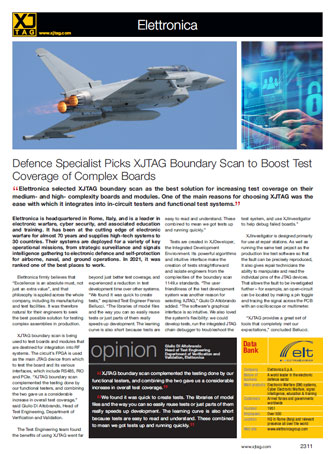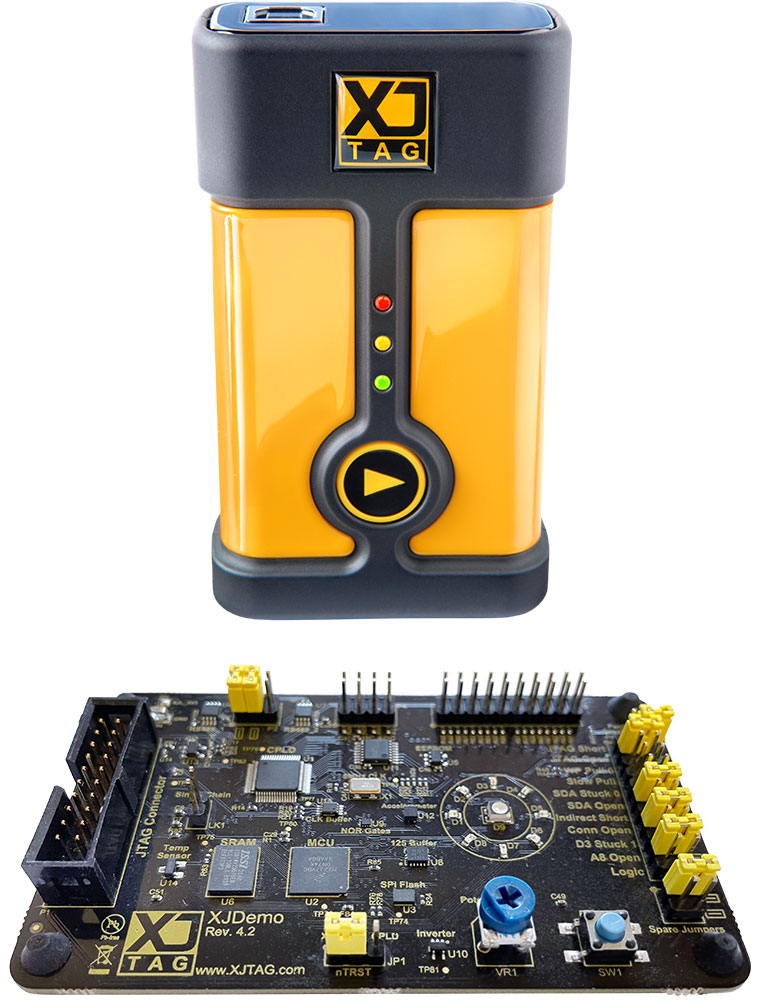
Defence Specialist Picks XJTAG Boundary Scan to Boost Test Coverage of Complex Boards
Elettronica selected XJTAG boundary scan as the best solution for increasing test coverage on their medium- and high- complexity boards and modules. One of the main reasons for choosing XJTAG was the ease with which it integrates into in-circuit testers and functional test systems.
Elettronica is headquartered in Rome, Italy, and is a leader in electronic warfare, cyber security, and associated education and training. It has been at the cutting edge of electronic warfare for almost 70 years and supplies high-tech systems to 30 countries. Their systems are deployed for a variety of key operational missions, from strategic surveillance and signals intelligence gathering to electronic defence and self-protection for airborne, naval, and ground operations. In 2021, it was ranked one of the best places to work.
Elettronica firmly believes that “Excellence is an absolute must, not just an extra value”, and that philosophy is applied across the whole company, including its manufacturing and test facilities. It was therefore natural for their engineers to seek the best possible solution for testing complex assemblies in production.
XJTAG boundary scan is being used to test boards and modules that are destined for integration into RF systems. The circuit’s FPGA is used as the main JTAG device from which to test the board and its various interfaces, which include RS485, RIO and PCIe. “XJTAG boundary scan complemented the testing done by our functional testers, and combining the two gave us a considerable increase in overall test coverage,” said Giulio Di Altobrando, Head of Test Engineering, Department of Verification and Validation.
The Test Engineering team found the benefits of using XJTAG went far beyond just better test coverage, and experienced a reduction in test development time over other systems. “We found it was quick to create tests,” explained Test Engineer Franco Bellucci. “The libraries of model files and the way you can so easily reuse tests or just parts of them really speeds up development. The learning curve is also short because tests are easy to read and understand. These combined to mean we got tests up and running quickly.”
Tests are created in XJDeveloper, the Integrated Development Environment. Its powerful algorithms and intuitive interface make the creation of tests straightforward and isolate engineers from the complexities of the boundary scan 1149.x standards. “The user friendliness of the test development system was another reason for selecting XJTAG,” Giulio Di Altobrando added. “The software’s graphical interface is so intuitive. We also loved the system’s flexibility: we could develop tests, run the integrated JTAG chain debugger to troubleshoot the test system, and use XJInvestigator to help debug failed boards.”
XJInvestigator is designed primarily for use at repair stations. As well as running the same test project as the production line test software so that the fault can be precisely reproduced, it also gives repair technicians the ability to manipulate and read the individual pins of the JTAG devices. That allows the fault to be investigated further – for example, an open-circuit can be located by making a pin toggle and tracing the signal across the PCB with an oscilloscope or multimeter.
“XJTAG provides a great set of tools that completely met our expectations,” concluded Bellucci.

XJTAG boundary scan complemented the testing done by our functional testers, and combining the two gave us a considerable increase in overall test coverage.
We found it was quick to create tests. The libraries of model files and the way you can so easily reuse tests or just parts of them really speeds up development. The learning curve is also short because tests are easy to read and understand. These combined to mean we got tests up and running quickly.

Company: Elettronica S.p.A.
Nature of business: A world leader in the electronic defence sector
Main products: Electronic Warfare (EW) systems, Cyber Electronic Warfare, signal intelligence, education & training
Customers: Armed forces and governments worldwide
Location: HQ in Rome (Italy) and relevant presence all over the world
Founded: 1951
Employees: Over 500
Web site: www.elettronicagroup.com

Configure your products














